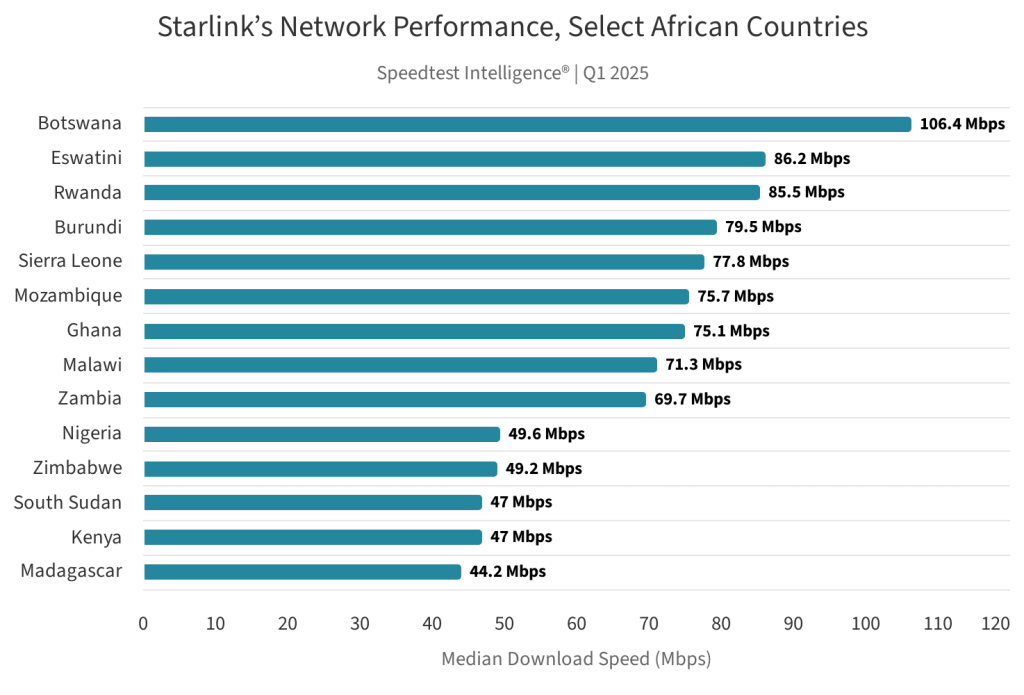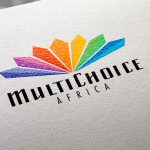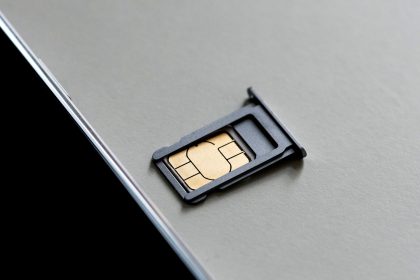Satellite technology—led by SpaceX’s Starlink—is disrupting Sub-Saharan Africa’s broadband landscape by offering fast, widely accessible internet, especially in areas underserved by traditional ISPs.
But performance varies widely, and high latency remains a hurdle.
This is according to a report from Ookla.
By the Numbers: Starlink’s Performance in Q1 2025
- Download Speeds:
- Top countries: Botswana (106 Mbps), Eswatini (86 Mbps), Rwanda (85 Mbps)
- Lagging: Nigeria, Zimbabwe, Kenya, Madagascar – all under 50 Mbps
- Still >2x faster than most terrestrial ISPs
- Upload Speeds:
- Kenya led with 14.85 Mbps, followed by Ghana and Rwanda (>13 Mbps)
- Latency:
- Best: Kenya (53 ms), Nigeria (60 ms), Rwanda (67 ms)
- Worst: Sierra Leone, Madagascar (>180 ms)

Why It Matters
Broadband in Africa has long suffered from poor infrastructure and slow speeds, especially in rural areas. Starlink’s wide LEO satellite network offers a leap in performance and access—if pricing and regulation don’t hold it back.
Country Highlights
- Kenya: Huge gains after a new PoP (Point of Presence) in Nairobi—upload speed doubled, latency dropped by 81%.
- Nigeria: Starlink is now the 2nd-largest ISP (65,000+ users), though sign-ups are paused in major cities due to capacity limits.
- Zimbabwe: Deep discounts ($30/month for unlimited data) are undercutting expensive fiber packages.
- Cameroon: Starlink was banned in April 2024 for operating without a license.
Starlink vs Traditional ISPs
- Starlink outperformed local ISPs in every country surveyed on download speeds.
- Example: Botswana – Starlink (106 Mbps) vs others (9.36 Mbps)
- Latency remains Starlink’s Achilles’ heel.
- Ghana: Starlink latency ~130 ms vs 13 ms on fiber
Roadblocks Ahead
- Regulatory challenges: Delayed launches in Angola, no licenses in South Africa, Senegal, DRC, Côte d’Ivoire
- Price barriers: Equipment costs range from $200–$700; monthly fees vary widely
- Capacity limits: Starlink has halted sign-ups in over 5 major African cities
The Path Forward
Starlink is partnering with telcos to scale responsibly.
In May 2025, Airtel Africa signed a deal to integrate satellite connectivity in 9 countries, hinting at a hybrid model combining satellite backhaul with local mobile or Wi-Fi infrastructure.
What’s Next
With next-gen satellites in orbit and more PoPs planned, Starlink may further narrow the digital divide. But affordability, regulation, and reliability will determine if it’s a short-term disruption or a long-term solution.










